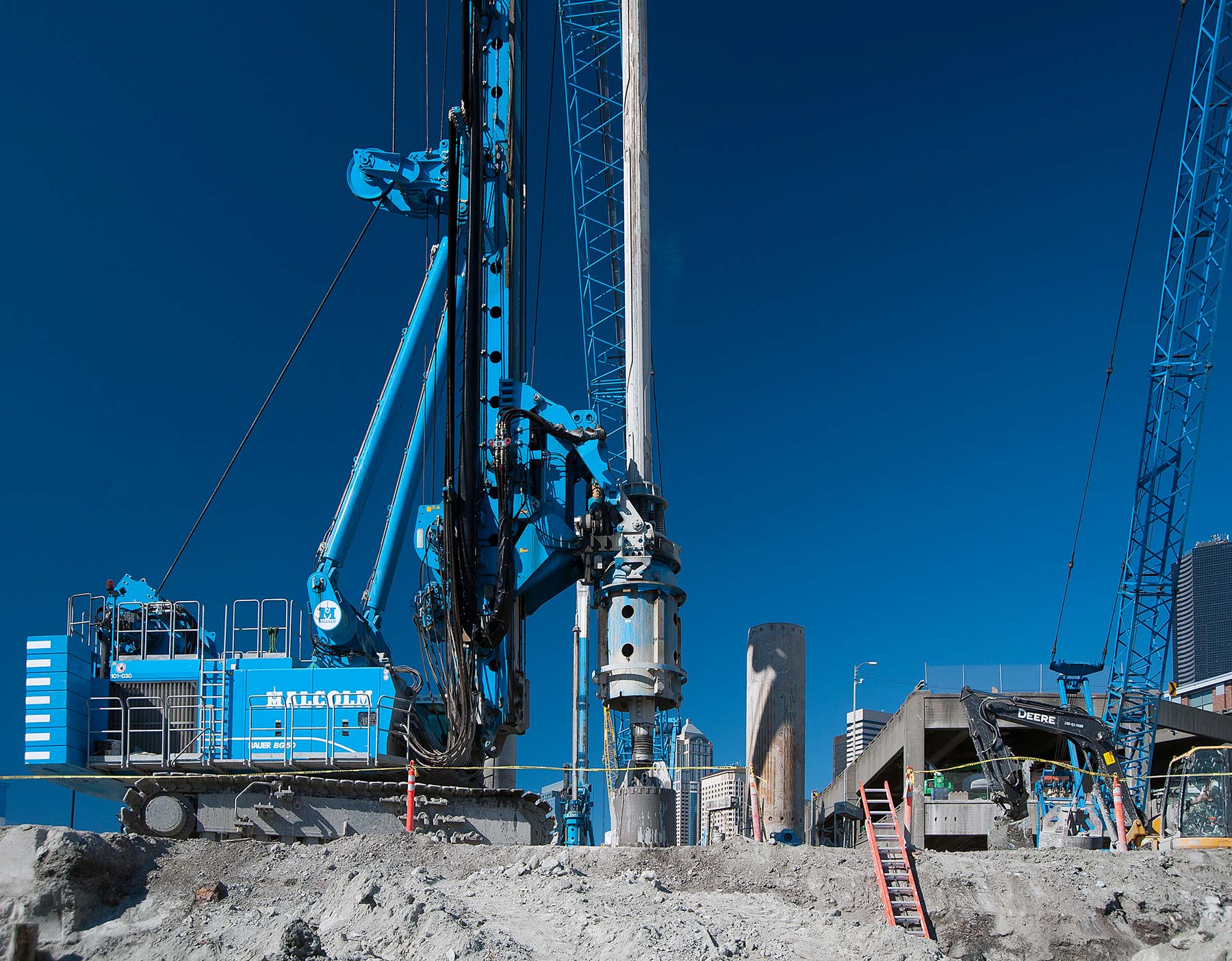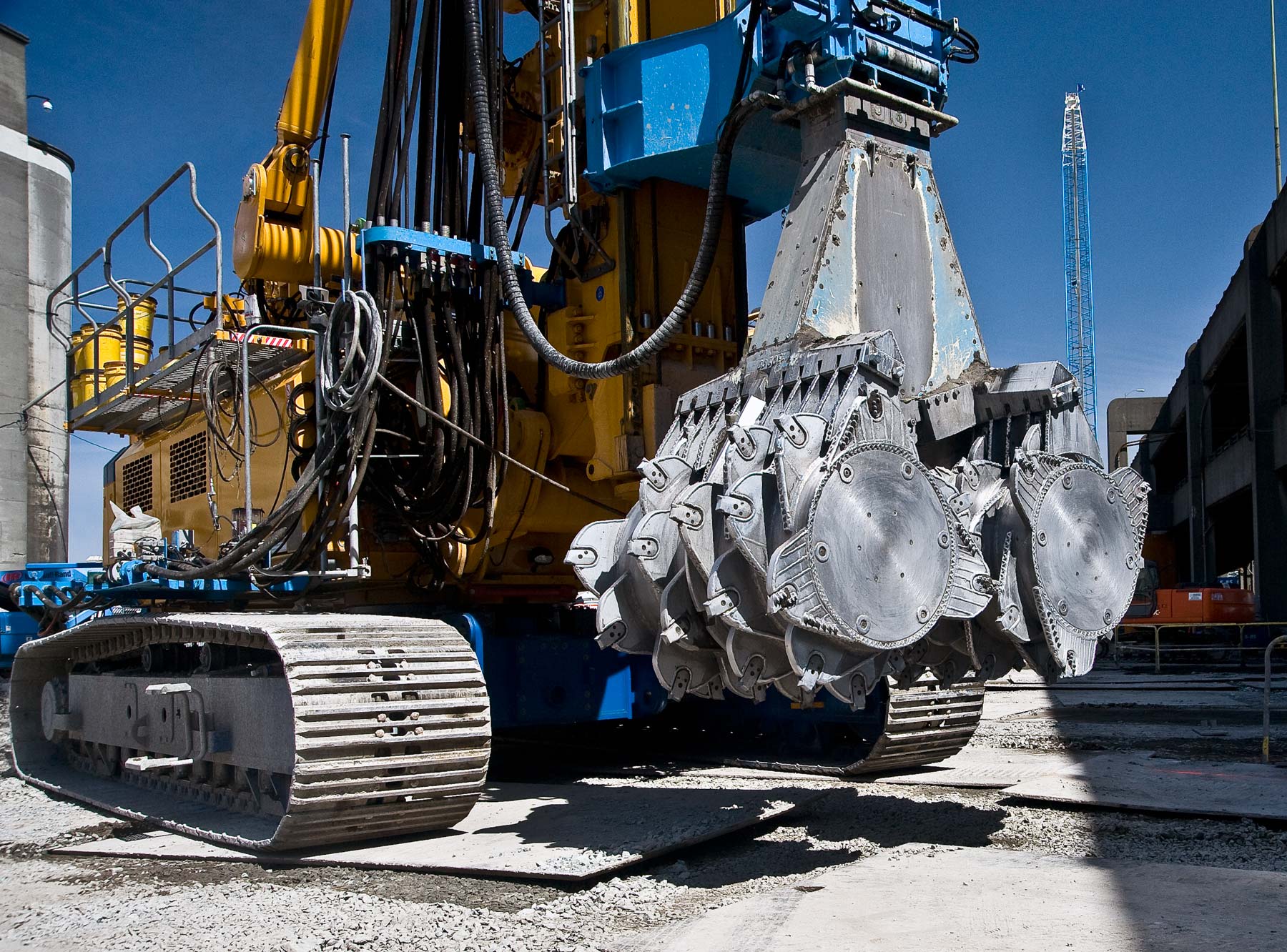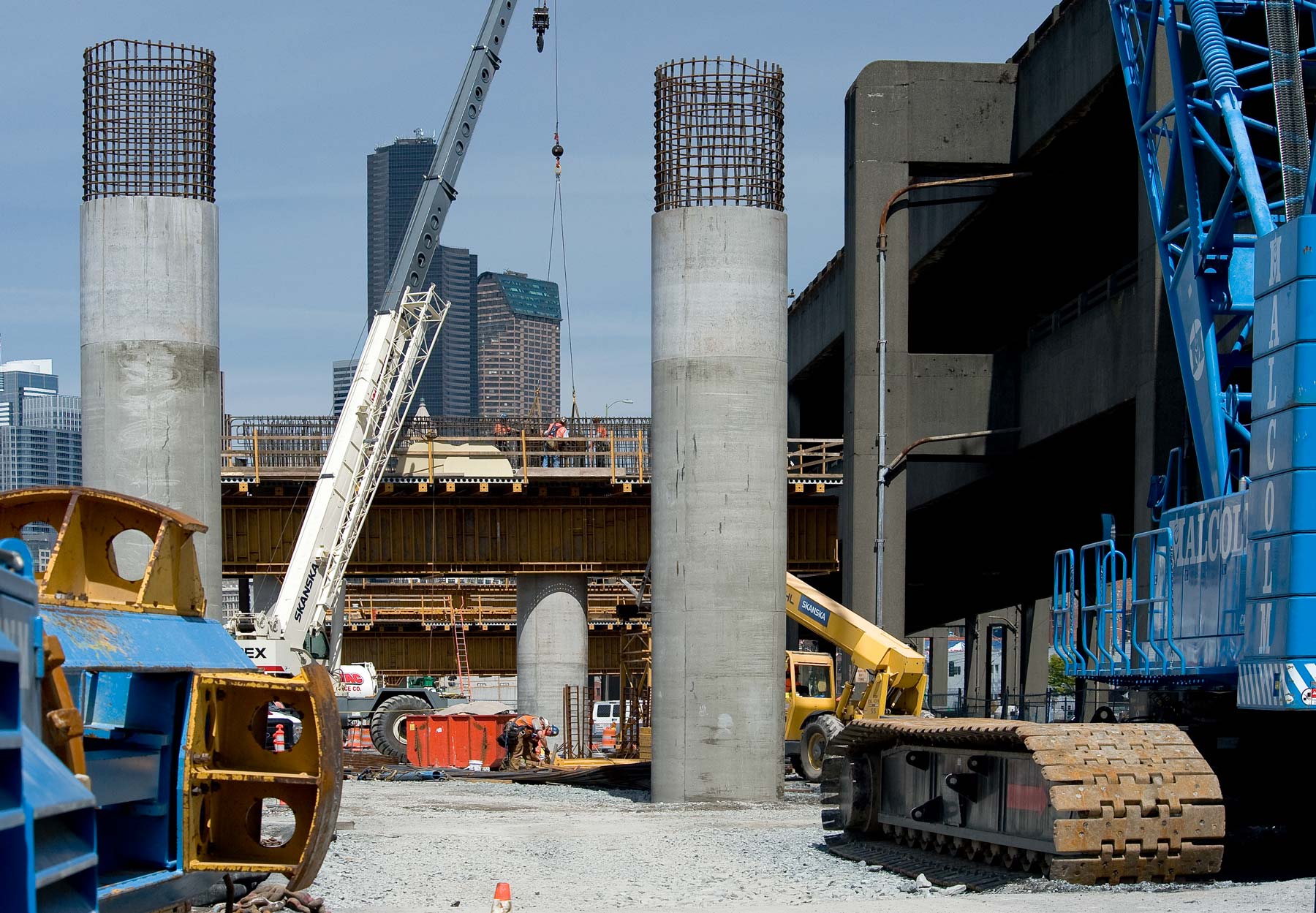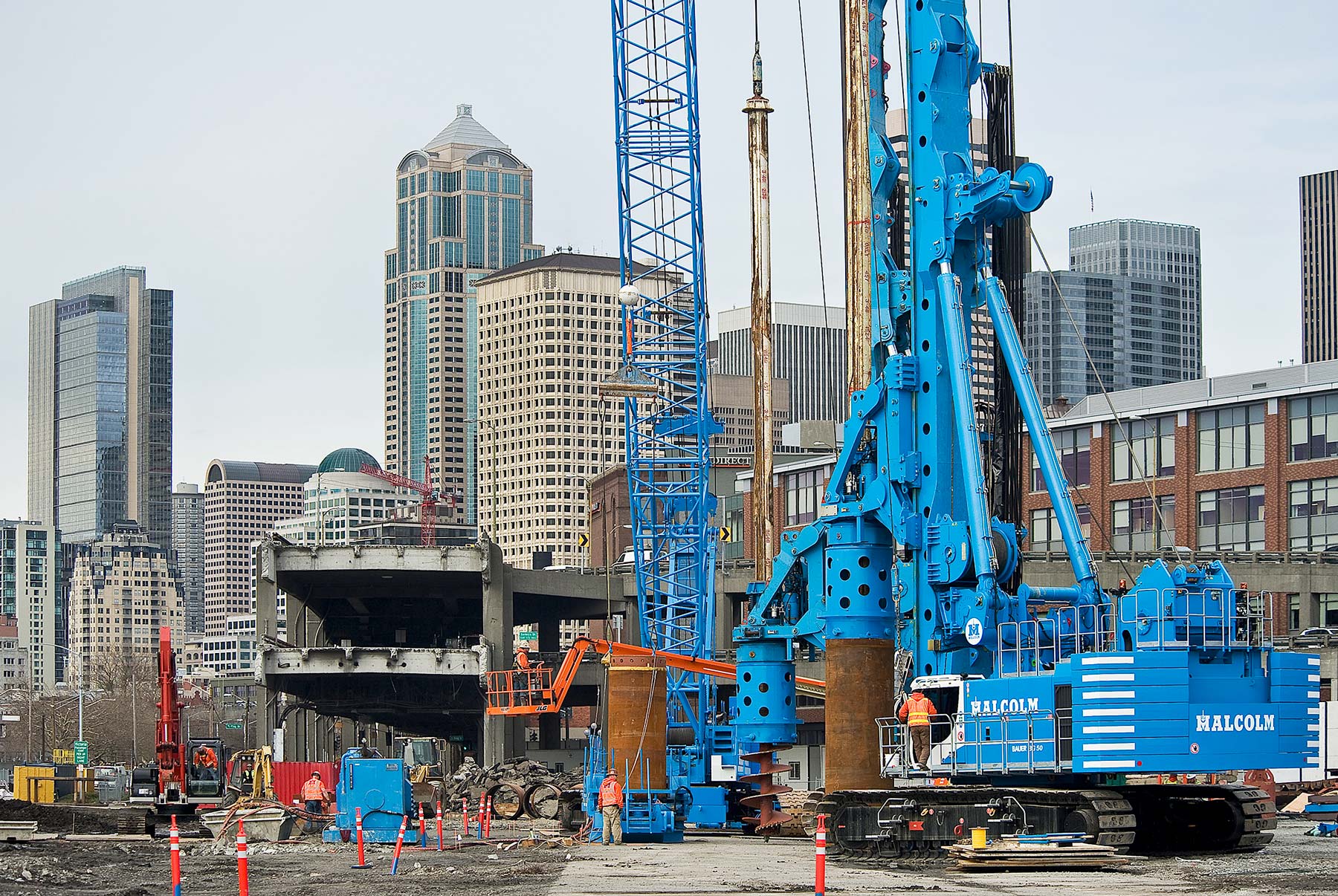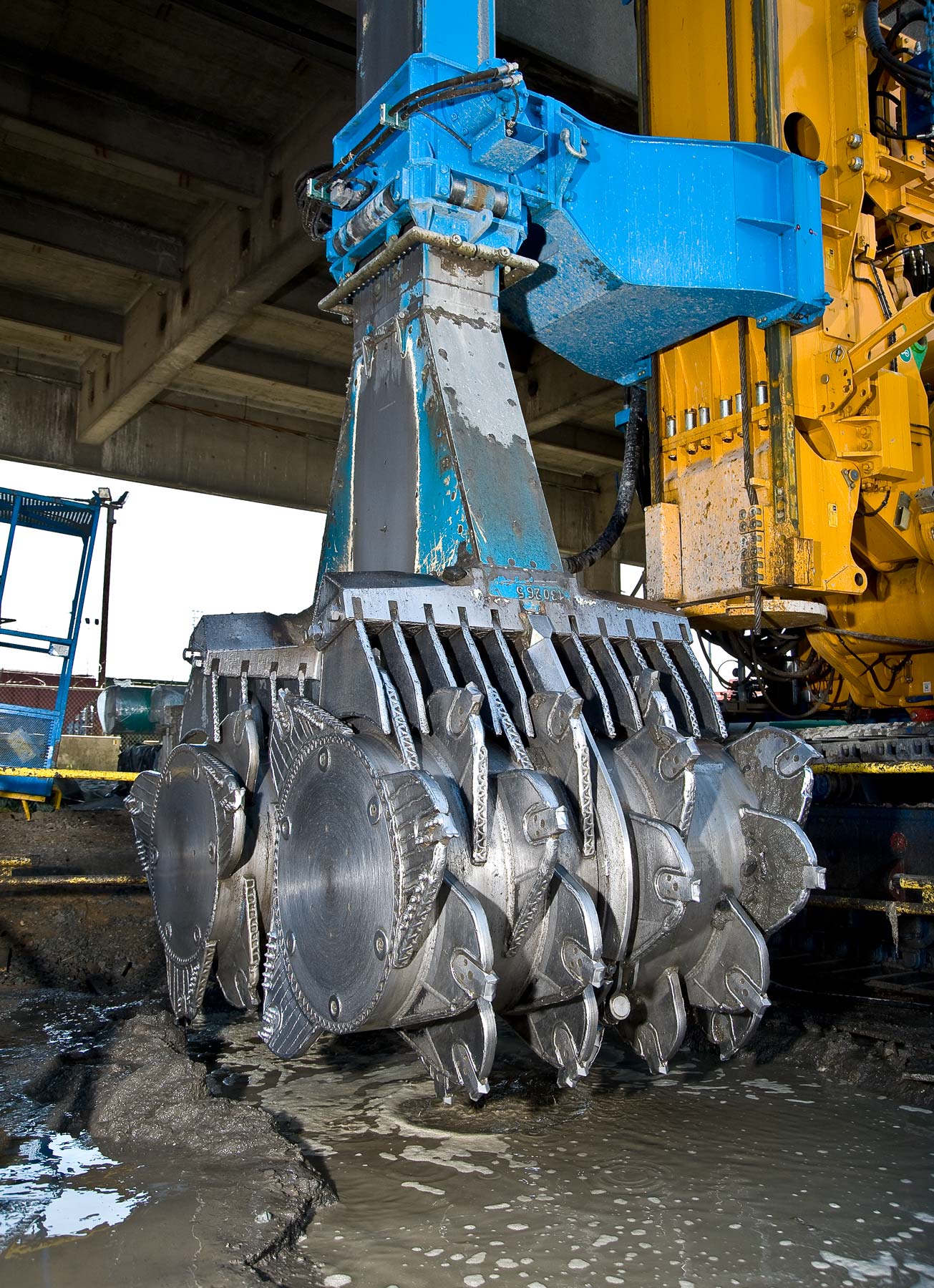Seattle’s Alaskan Way Viaduct carries thousands of vehicles to and from downtown, two major stadiums, and the Port of Seattle each day. The section of the Viaduct between South Holgate and South King streets was built on unstable soil that could liquefy in an earthquake and its foundation piles did not penetrate deep enough into solid ground. This project consisted of replacing the southern mile of the Alaskan Way Viaduct with two new side-by-side bridges that meet current earthquake standards, have wider lanes and improve mobility for people and goods in the south of downtown area. These bridges are supported on a hybrid foundation system consisting of drilled shafts encompassed by deep cement soil mixed confinement cells.
Cutter Soil Mixing (CSM) panels were installed to depths of 106 feet to ensure confinement of the new drilled shafts and protect against soil liquefaction. The design required that the outer wall thickness be a minimum of 5 feet requiring that a custom set of 5-foot wide cutter wheels be designed and fabricated specifically for this project. This width of CSM panel had never been attempted and established new standard for what is achievable with modern equipment. A modified two-phase cutting technique was used to complete installation of the deep panels while conventional single-phase cutting was used for all shallow panels.
Ground conditions were ideal for the modified large cutter head’s maiden trial. Installation sequence and panel layout were optimized; the quality of the soil-cement was second to none. Malcolm’s unique ability to employ state-of-the-art CSM, MEGA-Jet and Oscillator technology on the Alaskan Way Viaduct ensured the commercial and technical success of this critical project.
